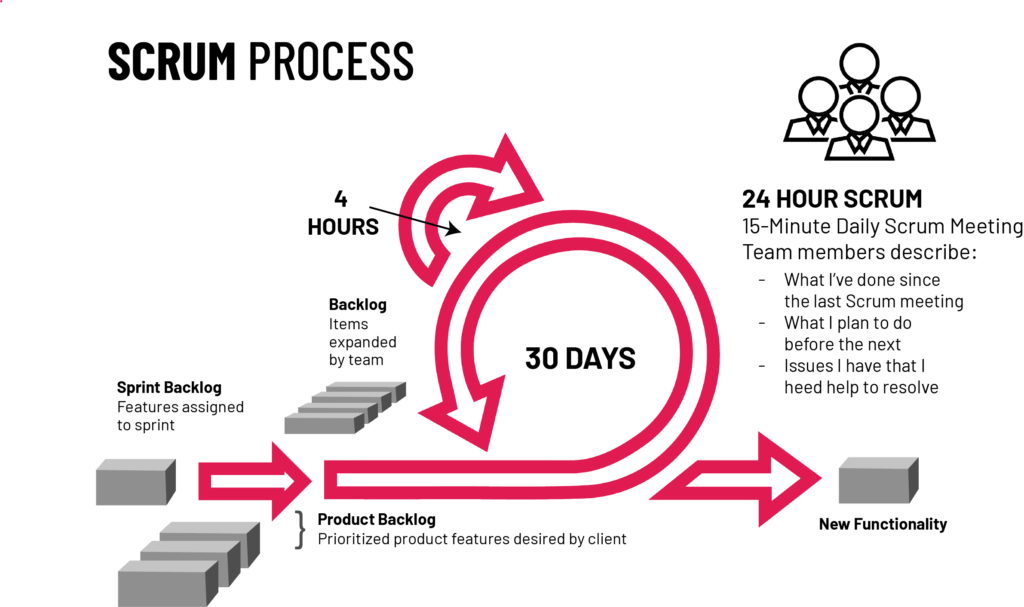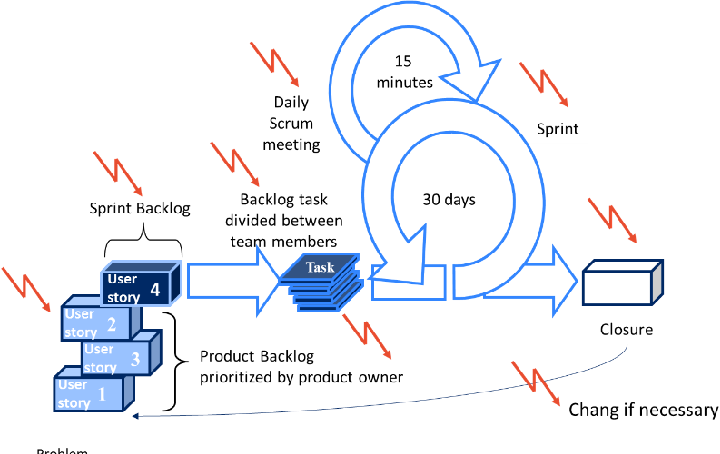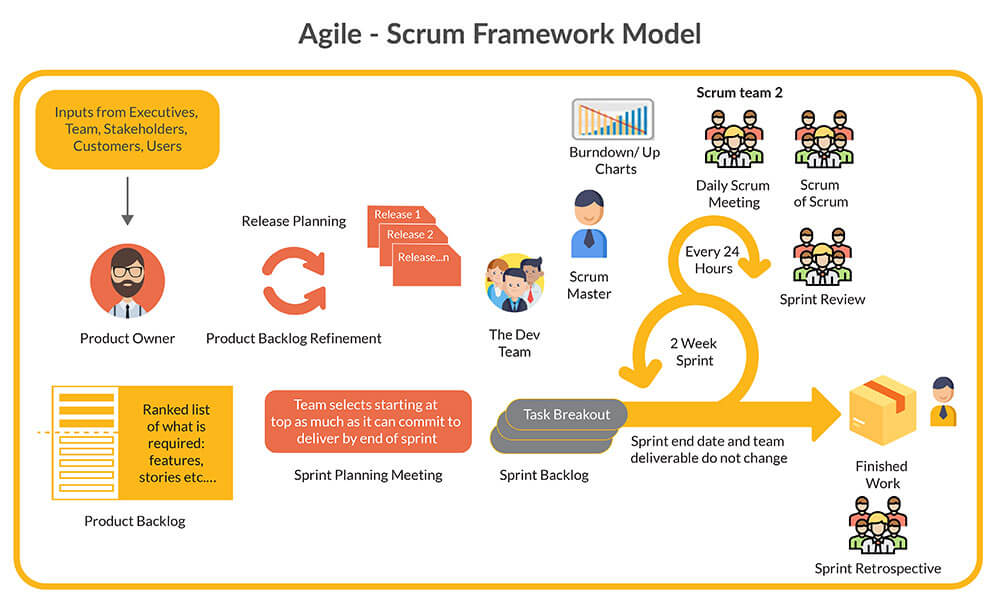In today’s rapidly evolving world, innovation is the lifeblood of any organization, especially in the field of Research and Development (R&D). The ability to quickly adapt to changing market dynamics and deliver cutting-edge solutions is what sets successful R&D teams apart. One methodology that has gained significant traction in recent years for achieving this agility is Scrum. In this blog post, we will explore how Scrum, an Agile framework originally designed for software development, can be a game-changer in the world of R&D. We’ll delve into the principles of Scrum, its adaptation for R&D projects, and real-world success stories of organizations that have harnessed its power.
Innovation in the 21st century demands more than just brilliant ideas; it requires the ability to turn those ideas into reality rapidly. Traditional R&D approaches often involve lengthy planning phases, rigid processes, and slow decision-making, which can stifle innovation. Enter Scrum, an Agile framework that originated in software development but has proven to be remarkably effective in the world of research and development. Scrum’s core principles of flexibility, collaboration, and iterative progress align perfectly with the needs of R&D teams striving for innovation in a fast-paced world.
Understanding Scrum
Before we dive into how Scrum can revolutionize R&D, let’s start by understanding what Scrum is all about. At its core, Scrum is an Agile framework that promotes iterative and incremental development. It is based on five fundamental values: commitment, courage, focus, openness, and respect. Scrum emphasizes transparency, inspection, and adaptation throughout the project’s lifecycle.
Scrum operates in time-bound iterations known as “sprints,” typically lasting two to four weeks. During each sprint, the team works to deliver a potentially shippable product increment. The Scrum framework revolves around a set of roles, ceremonies, and artifacts:
Roles:
Product Owner: Responsible for defining and prioritizing the project’s backlog.
Scrum Master: Facilitates the Scrum process and ensures the team adheres to Scrum principles.
Development Team: Cross-functional group responsible for delivering the product increment.
Ceremonies:
Sprint Planning: The team plans the work for the upcoming sprint.
Daily Standup: A brief daily meeting to discuss progress and obstacles.
Sprint Review: A meeting to inspect the increment and gather feedback.
Sprint Retrospective: A reflection on the sprint’s effectiveness and areas for improvement.
Artifacts:
Product Backlog: A prioritized list of features and requirements.
Sprint Backlog: A subset of the product backlog items selected for the current sprint.
Increment: The potentially shippable product outcome of a sprint.
Adapting Scrum for R&D
Now that we have a basic understanding of Scrum, let’s explore how it can be adapted for R&D projects. While Scrum was initially designed for software development, its principles can be applied to any project that requires innovation and flexibility.
Defining the Product: In R&D, the “product” may not be a software application but rather a new technology, a scientific discovery, or a breakthrough in a particular field. The role of the Product Owner in R&D becomes crucial in defining and prioritizing research goals and outcomes.
Cross-Functional Teams: R&D projects often require a diverse set of skills, including scientists, engineers, data analysts, and designers. Scrum encourages cross-functional teams, which can be invaluable in R&D where different expertise is needed to solve complex problems.
Iterative Research: Just as Scrum promotes iterative development in software, it can be applied to iterative research in R&D. Each sprint can represent a phase of research, such as data collection, analysis, and experimentation. The team continually refines their approach based on the results.
Flexibility: Scrum’s flexibility allows R&D teams to adapt to changing research priorities and insights. If new data or discoveries emerge, the team can pivot in response, ensuring that the project remains aligned with its goals.
Real-World Success Stories
To illustrate the power of Scrum in R&D, let’s take a look at some real-world success stories:
- Pharmaceutical Research: A leading pharmaceutical company adopted Scrum for its drug discovery projects. By organizing cross-functional teams and conducting research in sprints, they were able to accelerate the development of potential life-saving medications. The iterative approach allowed them to make quicker decisions based on research findings, ultimately bringing new drugs to market faster.
- Renewable Energy: An R&D team in the renewable energy sector utilized Scrum to improve the efficiency of solar panel designs. Through regular sprint reviews and retrospectives, they optimized their prototypes, resulting in solar panels that generated more energy at a lower cost. This innovation helped make clean energy more accessible to communities worldwide.
- Biotechnology Breakthroughs: A biotechnology startup leveraged Scrum to fast-track their gene-editing research. By breaking down complex experiments into smaller, manageable tasks and conducting daily standup meetings to address challenges, they significantly reduced the time required to achieve groundbreaking results.
The Bottom Line
Scrum is not a one-size-fits-all solution, but its adaptability and focus on collaboration and innovation make it a powerful tool for R&D teams looking to stay competitive in today’s fast-paced world. By embracing Scrum, R&D organizations can accelerate their innovation cycles, respond to emerging opportunities, and bring their groundbreaking ideas to market more swiftly.
In conclusion, the marriage of Scrum and R&D is a partnership that holds great promise. Whether you’re in pharmaceuticals, renewable energy, biotechnology, or any other field, the principles of Scrum can help you transform your R&D efforts into a well-oiled innovation machine. So, why wait? Dive into the world of Scrum, and let your R&D team thrive in the era of Agile innovation.





